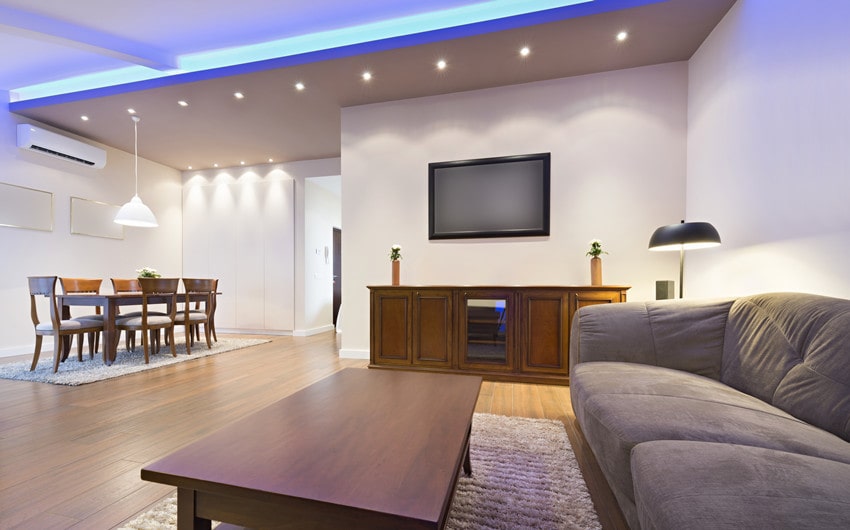LED lighting has revolutionized the way we illuminate our homes and workplaces. Not only do LED lights offer energy efficiency and long lifespan, but they also have the power to boost productivity. In this blog post, we will explore how the right lighting can enhance our focus, mood, and overall well-being, leading to increased productivity.
Research has shown that LED lighting mimics natural daylight, which can positively impact our circadian rhythm and regulate our sleep-wake cycle. By providing a balanced spectrum of light, LED lights promote alertness, reduce eye strain, and enhance cognitive performance. Whether you’re working from home, studying, or pursuing a hobby, optimizing your lighting environment with LED lights can make a significant difference in your productivity levels.
Join us as we delve into the various ways LED lighting can transform your productivity and create an atmosphere that fosters creativity and concentration. Discover practical tips and insights on how to harness the power of LED lighting to optimize your workspace and maximize your efficiency.
Stay tuned for our upcoming blog posts where we will dive deeper into specific lighting techniques and recommendations for different environments.
How Can LED Lighting Boost Your Productivity?
-
Dimming Lighting
Working in a well-lit environment is often associated with productivity, but interestingly, dimmed lighting can be more beneficial for certain individuals. Research indicates that softer lighting can improve productivity by up to 32% compared to bright light. This is because softer light is less straining on the eyes, resulting in reduced fatigue. Therefore, if you’re seeking to enhance productivity, consider using LED lights instead of regular bulbs.
Dimmers and timers can be utilized to optimize lighting in the workplace and regulate the amount of light. Dimming the lights in the afternoon can help reduce eyestrain and create a more relaxing atmosphere while brightening the lights in the morning can promote alertness and focus among employees.
-
No Flickering
LED light bars offer a flicker-free experience, eliminating the distraction of annoying flickers commonly associated with fluorescent bulbs. Additionally, they are glare-free, making them ideal for offices and workspaces where productivity is crucial. LED lights’ versatility extends to various colors, allowing you to select the perfect hue to match your mood and enhance task performance.
The potential for eye strain and discomfort caused by glare from traditional lighting fixtures can hinder productivity. Opt for LED lighting designed to minimize glare, ensuring a comfortable and visually optimal environment in workplaces. Choose fixtures tailored for workplace use to maximize the benefits of LED lighting for both efficiency and well-being.
-
Diverse Lighting Color Temperatures
The productivity impact of LED lighting extends to its color temperature. Cool white lighting promotes alertness and focus among workers, while warm white lighting contributes to a more relaxed atmosphere. Determining the optimal color temperature for your workplace involves considering the nature of tasks and work activities.
Whether aiming for heightened focus or a calming ambiance, the choice of LED lighting color temperature plays a pivotal role in shaping the work environment to align with specific job requirements and overall well-being.
-
Reduced Glare
While commercial LED track lighting has often been associated with eye strain and glare problems, contemporary fixtures now offer a multitude of anti-glare or glare-reducing options. These advancements address concerns and contribute to a more comfortable workplace environment, diminishing eye strain.
In addition, the availability of these modern LED fixtures with such features ensures not only improved visual comfort but also dispels the negative reputation that LED lighting has acquired over time. This makes LED lighting a viable and ergonomic choice for creating a pleasant and eye-friendly workspace, which in turn enhances productivity and overall well-being.
-
No Mercury
The choice of workplace lighting significantly impacts employees’ health, and a shift from CFLs to LED lighting reveals compelling advantages. CFLs containing mercury pose health risks if broken, necessitating work interruptions for proper cleanup following EPA procedures. Inhalation of mercury from broken bulbs can harm the lungs, kidneys, and various bodily systems. LED lighting, on the other hand, contains no mercury, ensuring workplace safety without disruption in the event of breakage.
CFL bulbs emit UV radiation, linked to skin and eye damage over time. LED lighting emits minimal to no UV radiation, establishing it as a safer alternative for the workplace, guarding against issues like premature aging, cancer, and cataracts.
Moreover, CFL bulbs’ tendency to flicker and exhibit color fluctuations throughout the day can cause discomfort, leading to headaches and dizziness for light-sensitive employees. In contrast, LED lighting maintains a consistent and flicker-free illumination, fostering a healthier and more stable work environment.
Conclusion
In conclusion, the choice between CFL and LED lighting in the workplace holds profound implications for employee health and operational efficiency. While CFLs pose risks with mercury exposure, UV radiation, and flickering issues, LED lighting emerges as the superior and safer option. The absence of mercury in LEDs ensures uninterrupted workflow even in the rare event of breakage.
Moreover, the minimal UV radiation and consistent illumination of LED lights contribute to a healthier, more comfortable work environment. By embracing LED technology, workplaces not only enhance safety but also promote employee well-being and productivity, marking a pivotal shift towards modern, sustainable lighting solutions.

